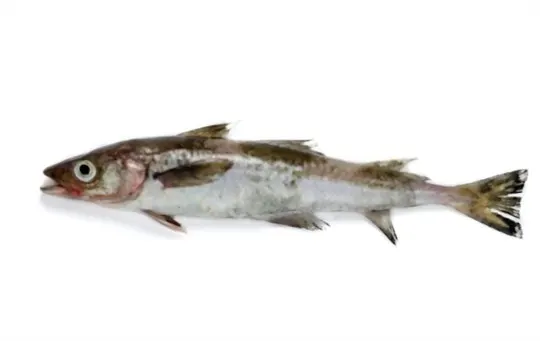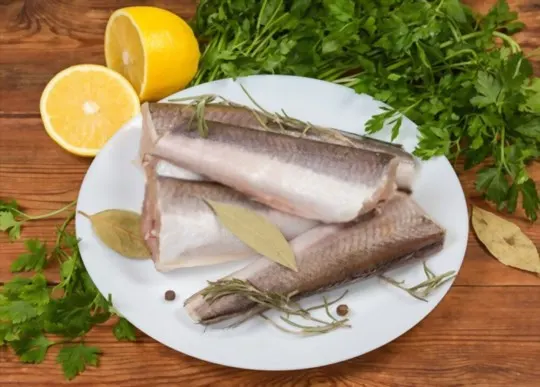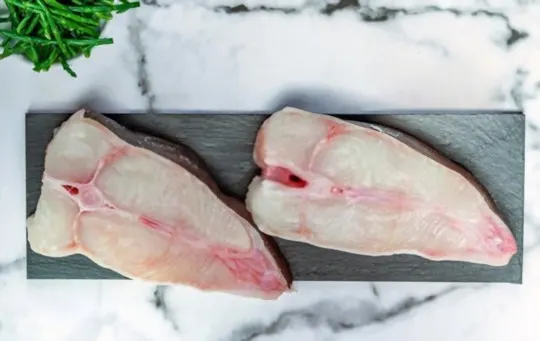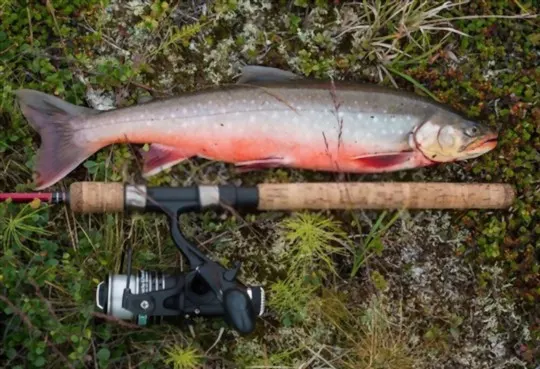Are you looking for a delicious and easy-to-find alternative to salmon? You’re in luck.
Whether due to allergies, budget constraints, or cultural preferences, we have the perfect substitutes for you.
In this article, we’ll explore five of the best choices available on the market today.
What is Salmon?

Salmon is a type of fish that is found in both the Atlantic and Pacific oceans.
It has a rich, bright orange-red hue, and when cooked correctly, it can have a tender, juicy and flavorful texture.
The flavor of salmon depends on the species and cut.
There are different types of salmon including wild Alaskan salmon, Atlantic salmon, Sockeye salmon and Chinook salmon.
Wild Alaskan Salmon is widely recognized for having the best flavor and texture.
For those who are new to cooking Salmon there are some things to keep in mind when selecting the perfect cut for your recipe.
Here are some tips:
- Be sure to buy fillets with skin on as this will help to retain moisture while cooking, or opt for wild caught skinless fillets if you do not wish to eat the skin.
- Look out for pieces of cartilage which can be difficult to cook through so make sure there is no visible cartilage present on your fillet. Cartilage can be removed before cooking if needed.
- When purchasing frozen fillets always check for ice crystals on the surface as these can affect the taste of your cooked fish; only buy frozen fillets that appear bright in color with no noticeable ice crystals on them.
Cooking salmon properly requires you to heat up the fish sufficiently so that it cooks evenly throughout while still retaining its moisture.
Here is how it’s done:
- Heat a nonstick pan over medium heat; add oil or butter if desired (omit oil or butter if using skinless fillet).
- Once warmed up place your chosen cut into the pan; make sure not to overcrowd as this will cause steam which could dry out your salmon during cooking so just cook one portion at a time if necessary.
- Cook 2 minutes per side until light pink or golden brown depending on your desired level of doneness; use tongs rather than fork to turn over as this will help keep more juices locked inside the fish during cooking time (omit turning step if using skinless fillet).
- Remove from heat once cooked through and enjoy.
5 Best Salmon Substitutes to Consider
When you’re looking for tasty seafood meals, it can be hard to find something that matches the texture and flavor of salmon.
But there are plenty of excellent alternatives.
Whether you’re watching your salt intake, are avoiding shellfish, or don’t have access to your favorite species of fish, there’s no need to stick to the same meals every week.
Here is a list of five tasty substitutes for salmon that are sure to please your palate.
1 – Pollack

Pollack, a type of fish from the cod family, is often used in place of salmon due to its low cost and light flavor.
Pollack can be cooked in a variety of ways, making it a great substitute for salmon.
It has a milder flavor than salmon, so if you’re looking for something with more flavor, this might not be the best choice for you.
However it is perfect for dishes that don’t call for too much intense flavor, such as salads or quiches.
When cooked correctly, pollack can be light and flaky with a tender texture similar to that of salmon.
2 – Hake

Hake is a great substitute for salmon, especially if you’re looking for an easy way to cut back on calories without sacrificing flavor.
Hake is a member of the cod family and it has a mild, sweet flavor that can easily be transformed into dishes similar to those made with salmon.
Hake has a light pink coloring when raw and cooks quickly.
The texture of hake is generally less flaky than that of salmon, so it works best in recipes where the fish does not have to be broken apart too much.
When cooking, some light oils can be used to avoid drying out the fish too much.
3 – Halibut

Halibut is a generous substitute for salmon.
It’s a mild-tasting yet versatile fish with a firm texture and large amount of flaky flesh.
Halibut also holds up well during cooking and retains its flavors making it a great choice for grilled, baked or sautéed preparations.
To ensure maximum freshness, buy halibut filets that are bright white with no discoloring or bruising when selecting at the fish counter.
Halibut can be officially found on most US coasts but can be caught in the waters of Canada, Europe and Asia as well.
Additionally, halibut can last longer than salmon in the refrigerator if frozen (up to 6 months).
Note that all sizes of halibut must have their skin removed prior to cooking which can be a tricky task, depending on the size of the halibut filet and thickness of its skin.
4 – Steelhead Trout

Steelhead trout, often sold as rainbow trout, has fishy, mild flavors and a slightly sweet taste that makes it perfect for substituting salmon.
It is a good source of omega-3 fatty acids, protein, potassium and other vitamins and minerals.
Although steelhead trout does not have as much omega-3 content as salmon does, this substitute is still an excellent choice for heart health.
Steelhead trout can be cooked in many different ways, from simply grilling over hot coals to steaming in parchment to sautéing and more.
Be aware that steelhead trout can be higher in mercury than some other types of fish so it’s important to research sustainability options when buying.
5 – Arctic Char

Arctic char is one of the best salmon substitutes around.
Not only does this fish share many of the same flavors as salmon, but it also resembles salmon in terms of both texture and color.
Arctic char is available mainly in frozen fillets, so if you are searching for a fresh substitute, this may not be the best option for you.
When cooked properly, Arctic char has a smooth, creamy flavor and should have a delicate flakiness when handled.
While Arctic char is similar to salmon in many respects, it does have one distinct advantage over salmon — it contains healthy omega-3 fatty acids that can benefit your overall health.
Conclusion.
While it may be difficult for some to find, purchase, or prepare fresh salmon, there are many good substitutes for it that will provide a delicious seafood meal.
Seafood alternatives like canned tuna, trout and walleye, shrimp and even alternative fish such as mackerel can easily be found in most supermarkets.
When selecting a substitute for salmon, think about the flavor profile of the dish and determine what kind of flavor balance works best.
In addition to these great options, there are also vegetarian substitutes such as lentils and mushrooms that provide a variety of health benefits and can easily round out a meal whether you’re looking for something fancy or just a simple weeknight dinner.
The five replacement options discussed above should give you a nice starting point when trying to come up with the perfect substitution for salmon in your next dish.

5 Best Salmon Substitutes to Consider
Ingredients
- 1 – Pollack
- 2 – Hake
- 3 – Halibut
- 4 – Steelhead Trout
- 5 – Arctic Char
Instructions
- Choose your preferred substitute from the list of options.
- Organize all of your ingredients.
- Use the proper substitute to cook your recipes.

Carrie is a food writer and editor with more than 15 years of experience. She has worked for some of the biggest names in the food industry, including Bon Appétit, Food & Wine, and Martha Stewart Living.
As the Editor in Chief of IntroChicago.com, Carrie oversees all of the content on the site. She also manages the team of contributing writers and editors, who help to create delicious recipes, helpful tips, and informative articles that you’ll find on the site.
A native of the Chicago area, Carrie is passionate about all things food. She loves trying new restaurants and experimenting with new recipes in her kitchen. She’s also a graduate of the Culinary Institute of America, so she knows a thing or two about food!
